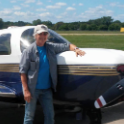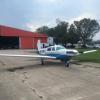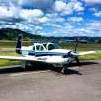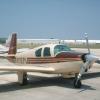All Activity
- Today
-
The first leak was from the actuator. I'm not sure exactly where this one is. I decided to wait until the annual in October to have it fixed. I'm not sure about the fluid line, but you're right, if it's as old as the plane it's time to replace it.
-
If the Limitations section of the AFMS limits its use, it controls. This is from Revision 8 of the GTN (not Xi) AFMS Limitations, so no such limitation. “2.10. When using the VOR or ADF receiver to fly the final approach segment of a VOR or NDB approach, GPS may be the selected navigation source so long as the VOR or NDB station is operational and the signal is monitored for final approach segment alignment.” OTOH, Rev E for the older GNS W units does in 2.6 “GPS guidance can only be used for approach procedures with GPS or RNAV in the procedure title. When using the Garmin VOR/LOC/GS receivers to fly the final approach segment, VOR/LOC/GS navigation data must be selected and presented on the CDI of the pilot flying.” AFAIK, the GNS limitations were never updated to the newer AIM guidance.
-
Just musing out loud here... You have a TSIO-360-MB (or GB or LB). You're flying it in cruise at 75% power of your 210 rated HP. Say 28"/2500RPM/13.5 GPH, just for a rough example. At 75% power, no matter how you get there, you're putting out 157.5 horsepower. You take that same engine and reconfigure it to a TSIO-360-SB. The engine internals, to include crankshaft, pistons, connecting rods, and compression ratios, have not changed. But now your takeoff power settings are 39" and 2600 RPM which generates 220 HP. You take off again, and set your engine the same to 28"/2500RPM/13.5 GPH, putting out 157.5 horsepower. You are now at 72% power, with the engine performing exactly the same as before the conversion. Are you taking it any easier on your engine than before? All that to say - why do we focus on % of horsepower for cruise power settings? Wouldn't it be better to choose settings that produce ideal temperatures for CHT, EGT, and TIT? How are you even "taking it easy" on the engine by running it at reduced horsepower? % power isn't even a very good rule of thumb. I didn't do the math to verify what I posted above is 75%, I think it's actually a little less, but it requires a mathematical formula to know, it depends on whether you're ROP or LOP, and the number your engine monitor displays for it can even be wrong. Rules of thumb are supposed to be quick and easy and this is not. What the guys at GAMI say always sticks with me: "It's not how hard you run the engine - It's how you run the engine hard."
-

VOR Approaches Using GPS
donkaye, MCFI replied to donkaye, MCFI's topic in Avionics/Panel Discussion
You are correct. If you have an older GTN 750 and not the Xi there may be an issue, if the AFMS says you must change to VOR for the FAS, as it doesn't look like Garmin updated their manual. That is not the case with the latest GTN 750 Xi version. See attached. Since both models were certified to TSO C-129 standards, you would think they could both fly the VOR approach similarly. I deliberately left off a Localizer type approach, since the FAS must be flown with the CDI in localizer mode, as there is no way to monitor it with a bearing pointer. -
It’s an interesting topic. My immediate thought was that Garmin provides guidance on use of the GTN as primary for a VOR approach on the final approach segment.. I grabbed my GTN manual (screenshot below). Garmin suggests that VLOC mode is “required” and that the pilot “must” switch from GPS to VLOC before the final approach segment. If the AFMS for the navigator requires using the ground-based nav source as primary for the final approach segment, does the AFMS control the decision?
-

VOR Approaches Using GPS
donkaye, MCFI replied to donkaye, MCFI's topic in Avionics/Panel Discussion
I'd refer you to AC 90-119. PBN, Performance Based Navigation. Read especially Chapter 12. AC_90-119_Coord_Copy.pdf -
I believe WAAS also provides more accurate lateral guidance; not just vertical.
-
https://greenwayscc.com/blogs/articles/polymer-coating-or-ceramic-coating-which-is-right-for-your-car#:~:text=When it comes to durability,months%2C requiring reapplication more frequently.
-
KirillAlexeev joined the community
-
I’ve actually wondered about this recently so…. I’ll be the dumb guy. Why would WAAS be required when vertical guidance is not consistent with a VOR approach?
-
The problem wasn’t that Lucas couldn’t make a good system it was the company’s using their product paid minimum pounds for the complete packages so corners had to be cut to remain profitable. Many formula one teams used their injection and ignition systems to great success during the sixties and seventies including one of the most successful engines in the sport the ford Cosworth DFV
-
donkaye, MCFI started following VOR Approaches Using GPS
-
Can a stand alone VOR (Not "or GPS") approach be completely flown using GPS as the primary source of navigation--especially on the final approach segment? Too many people either don't know the answer to that question, answer it incorrectly, or are confused by AIM 1-2-3 Notes (4) and (5). Careful reading of AIM 1-2-3 with support from AC 90-119 (draft) provides the answer. My intention is just to provide the answer without going into a long dissertation. The answer is a qualified, YES. Qualifications: 1. A WAAS RNAV system TSO'd under TSO-C129 capable of navigating the final approach segment. 2. The underlying VOR must be operational. Confusion arises by misinterpreting Note (4) in AIM 1-2-3. It states, "Pilots may not substitute (my highlight) for the NAVAID providing lateral guidance for the final approach segment). Note (5) says, "Use of a suitable RNAV system as a means to navigate on the final approach segment of an instrument approach procedure based on a VOR, TACAN, or NDB signal, is allowable. The underlying NAVAID must be operational and the NAVAID monitored for final segment course alignment". At first glance it appears that Notes (4) and (5) are contradictory. They are not. The critical word it SUBSTITUTE. Substitute in Note (4) means using GPS exclusively for the approach. Note (5) refers to using a "suitable navigation system" (for example a GTN 750) used in conjunction with the underlying VOR to run the approach. Thus a VOR approach can be run using "a suitable navigation system" (WAAS GPS certified under TSO-129) as the primary source of navigation as long as the underlying VOR is operational and monitored along the final approach segment with either a CDI or bearing pointer.
-
Urgent Notice: New Members PLEASE READ!
Justin Schmidt replied to mooniac58's topic in General Mooney Talk
Fyi, software engineer here, if your getting nude or porn or sex store ads. It is NOT the site. it's YOU, lay off the porn and your search history. Destroying society anyway. -
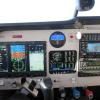
Urgent Notice: New Members PLEASE READ!
mooniac58 replied to mooniac58's topic in General Mooney Talk
Yeah the real infestation happened over a few days in early August - then it was hundreds of topics being posted in just a few hours. Prior to that we had them here and there but nothing like that. Crazy thing is today I had a spammer register, pay the $2 fee for instant validation and then immediately make a bunch of spam posts. I'm expecting them to file for some kind of refund/chargeback through PayPal now. Hopefully that will not become the new problem... - Yesterday
-
kortopates started following Speed brake doesn’t close all the way , Mooney Lycoming riveted turbo v clamp. and Starlink Mini in a J
-
As I understand it, ceramic waxes use silica (SiO2) in place of carnauba. SiO2 is a component of ceramics and hence the marketing term "ceramic" for these waxes. There are probably varying qualities of this stuff and it will be difficult to tell the difference from the marketing hype.
-
I can’t exactly remember where I got my mechanical fuel pump, but it was overhauled/exchanged. Maybe through Spruce or Aircraft Accessories? It was probably 2020, and it was always ~30-31psi on the ground - measured by an edm-930.
-
Al Jesmer at Precision Airmotive has stated that the RSA fuel injection servo works fine with input fuel pressures in the range of 20-35 psi. I have heard that at one point Lycoming was shipping fuel pumps that exceeded the 30 psi limit that Mooney put in the airframe limitations. However, the rebuilt IO-360-A3B6 that I got from Lycoming in late 2018 does not have this issue, so if it was a problem, Lycoming seems to have corrected it.
-
Form, fit, function...been around a while, especially with older aircraft....haven't heard on one instance where it's been an issue and neither has Cygnet with all the ones they have sold to Mooney drivers
-
Whatever these various coatings are, I doubt that they are "ceramic" as the term is genrally understood in material sciences. If I recall corectly, ceramics are generally mixtures of various inorganic minerals and water that are formed to desired shape and subsequently hardened by exposure to high temperatures. Most of the "ceramic coating" products that I looked at state that they are polymers which would indicate presence of organic compoounds, hence not ceramics. Marketing hype at its best . Notwithstanding the hype, some of the products do seem to provide good protection to automobiles and aircraft. I might try one of these to see.
-
As Scott mentioned above you may need to change the actual yoke (behind the panel). You will have to change the part that connects the forward portion of the two yoke shafts. The newer style (and I am referencing the Ovation parts which I used) have bronze bearings and are different from what is in the E. John Breda
-
Wow! That thing is thirsty! But I bet it screams!
-
YUP!
-
Interesting because I never saw them but if they were only for a couple of weeks - a couple of weeks ago -I may have been out of the country when it happened
-
No, 39”/2600rpm is max. Id guess the cruise settings are slightly higher hp to be 65% of 220hp rather than 210hp, but I doubt it’s much different.
-
Ragsf15e started following High Fuel Pressure Reading
-
I’m surprised nobody has pointed this out, so maybe there’s something I’m missing, but this has been happening on a lot of Mooneys. I thought we traced it down to a newer style/brand fuel pump that has a tendency to hit right at the max of 30 or just above it, especially on the ground. I know my F was doing that after we replaced the fuel pump. I guess what I’m saying is it’s probably correct, and it is not a problem. The fuel servo can take something like 40 to 60 psi. I think @PT20J has the specs that the engine can actually tolerate.

